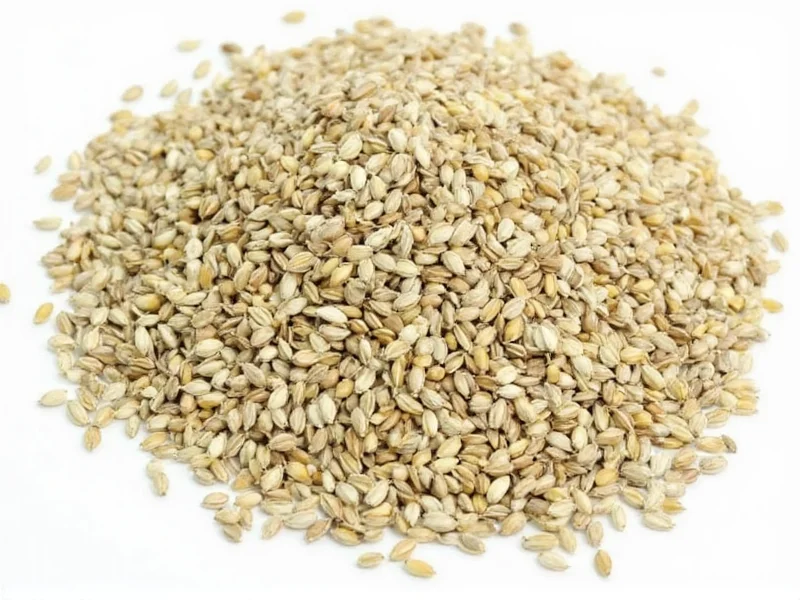Understanding Caraway Seed Applications
Caraway seeds (Carum carvi) have been valued for centuries across multiple cultures for their distinctive flavor and potential health properties. These crescent-shaped seeds from the parsley family offer more than just culinary enhancement—they provide practical solutions for everyday needs when used appropriately.
Culinary Applications of Caraway Seeds
Chefs and home cooks worldwide incorporate caraway seeds into diverse dishes. Their warm, slightly sweet flavor with citrus undertones complements both sweet and savory preparations. Unlike similar spices such as cumin or fennel, caraway maintains its distinctive character even when cooked for extended periods.
| Culinary Application | Preparation Method | Recommended Quantity |
|---|---|---|
| Rye bread baking | Toast seeds lightly before mixing into dough | 1-2 tablespoons per loaf |
| Vegetable dishes | Add to sautéed cabbage or roasted root vegetables | 1 teaspoon per serving |
| Meat preparations | Include in sausage blends or meatloaf mixtures | 1-2 teaspoons per pound of meat |
| Infused beverages | Steep in hot water for tea or add to mulled wine | 1/2 teaspoon per cup |
Traditional Medicinal Uses
Historical records show caraway seeds have been used for digestive support across multiple cultures. Many traditional systems incorporate caraway seed tea to address occasional digestive discomfort. Research suggests caraway contains compounds that may support healthy digestion when consumed in culinary amounts.
When preparing caraway seed tea, use one teaspoon of crushed seeds per cup of boiling water. Allow to steep for 5-10 minutes before straining. This simple preparation represents one of the most common caraway seed uses for digestive wellness in traditional practices.
Practical Household Applications
Beyond the kitchen, caraway seeds serve practical purposes. Their natural properties make them useful for preserving certain foods and even deterring pests in pantries. Some traditional cheese-makers incorporate caraway seeds not only for flavor but also for their potential preservative qualities.
Gardeners sometimes use caraway in companion planting strategies. The plant's growth habits and scent may benefit certain neighboring plants, though scientific evidence for these gardening applications remains limited.
Storage and Preparation Tips
Proper storage maintains caraway seed quality. Keep seeds in an airtight container away from light and heat. Whole seeds retain flavor longer than ground caraway—typically 1-2 years versus 6-12 months. For maximum flavor release, lightly toast seeds before use, then crush or grind as needed for specific recipes.
Understanding how to use caraway seeds properly enhances their effectiveness in various applications. The seeds' essential oils contain the primary flavor compounds, which release best when seeds are slightly warmed before incorporation into dishes.
Nutritional Profile
Caraway seeds contain dietary fiber, iron, magnesium, and calcium. They also provide antioxidants and phytochemicals that contribute to their traditional uses. While not a significant source of daily nutrients due to typical consumption amounts, they add valuable compounds to culinary preparations.
Safety Considerations
Caraway seeds are generally recognized as safe when consumed in typical food amounts. Those with allergies to plants in the Apiaceae family (including parsley, celery, and carrots) should exercise caution. Pregnant women should consult healthcare providers before using caraway in medicinal quantities, though culinary use presents minimal risk.
Integrating Caraway Into Daily Life
Start incorporating caraway seeds by experimenting with small additions to familiar dishes. Try adding them to potato salad, tomato sauces, or even fruit compotes for a distinctive flavor dimension. Understanding caraway seed uses expands culinary possibilities while connecting to centuries of traditional knowledge.
Frequently Asked Questions
What are the primary culinary uses for caraway seeds?
Caraway seeds feature prominently in rye bread, sauerkraut, goulash, and cheese preparations. They enhance both savory dishes and some sweet baked goods. The seeds work particularly well with cabbage, potatoes, and pork dishes, providing a distinctive flavor that complements these ingredients.
Can caraway seeds help with digestion?
Traditional practices use caraway seeds to support digestive comfort. Many people prepare caraway seed tea by steeping one teaspoon of crushed seeds in hot water for 5-10 minutes. While scientific research continues, caraway's historical use for occasional digestive discomfort remains widespread across multiple cultures.
How should I store caraway seeds to maintain freshness?
Store whole caraway seeds in an airtight container away from light and heat. Properly stored, they maintain optimal flavor for 1-2 years. Ground caraway loses potency more quickly (6-12 months). For best results, toast and grind seeds just before use to maximize flavor release in your dishes.
What's the difference between caraway seeds and cumin?
While both belong to the Apiaceae family, caraway seeds have a sweeter, more delicate flavor with citrus notes compared to cumin's earthier, stronger profile. Visually, caraway seeds are smaller and curved, while cumin seeds are straighter and larger. Culinary applications differ significantly—caraway works well in European breads and dishes, while cumin features prominently in Middle Eastern and Indian cuisines.
Can I grow caraway plants at home?
Yes, caraway grows as a biennial plant in temperate climates. It requires well-drained soil and partial to full sun. The first year produces foliage, while seeds develop in the second year. Home gardeners can harvest seeds when they turn brown and easily detach from the plant. Growing your own provides fresh caraway for culinary uses and connects you to traditional cultivation methods.











 浙公网安备
33010002000092号
浙公网安备
33010002000092号 浙B2-20120091-4
浙B2-20120091-4